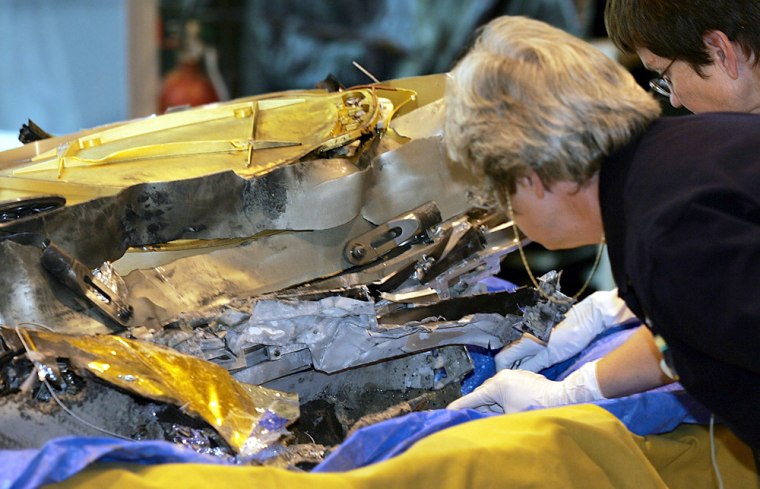Scientists tried to pry apart a mangled NASA space capsule in hopes of salvaging its precious cargo of solar atoms Thursday, a day after the saucer-shaped probe crashed in the Utah desert.
The broken capsule was taken to a laboratory at the Army’s Dugway Proving Ground, where scientists used tweezers to pick through the wreckage.
The $264 million Genesis mission, meant to reveal clues about the origin of our solar system, appeared to be streaming home to a perfect conclusion Wednesday when two parachutes failed to open and the 450-pound (205-kilogram) capsule slammed into the ground at nearly 200 mph (309 kilometers per hour), burying itself halfway in the sand.
“We had a mangled mess,” said NASA program scientist David Lindstrom.
Battery suspected
NASA planned to appoint a board to determine the cause of the failure. Flight engineers said a set of tiny explosives did not trigger the capsule’s parachutes, although the fact that all the explosives failed pointed to another cause.
Robert Corwin, an engineer for Lockheed Martin Space Systems, which designed and built the craft, said a battery that overheated shortly after the 2001 launch could be a culprit. He also was looking at a possible malfunction of the electronics or sensors controlling the parachutes.
The capsule’s outer layer broke open like a clamshell but survived mostly intact. The damage was far worse for an inner cylinder, which also ripped open and was left grotesquely twisted. The brittle atom disks inside were packed together so tightly that it was hard to assess the damage.
“There’s a lot we still don’t know about the contents of the capsule,” he said.
Billions of charged atoms
The capsule held billions of charged atoms — a total haul no bigger than a few grains of salt — captured from the solar wind on five disks during the 884-day mission.
The inner canister was flown to the Army installation and put in a clean room, a work area in which the air quality, temperature and humidity are regulated to prevent contamination. The reconstruction is expected to take days, and scientists hoped to salvage the deeply embedded atoms.
“This is something that’s not a total disaster,” said Carlton Allen, astromaterials curator for NASA’s Johnson Space Center. “We didn’t lose all the science in the crash.”
The mishap raised questions about the durability of another NASA sample-return capsule called Stardust, due to land at Dugway in 2006. But that capsule was built to be more rugged and will land on its own with a parachute, instead of the daring midair catch planned for Genesis.
Helicopters flown by Hollywood stunt pilots were supposed to grab Genesis’ parachute with a hook almost a mile above the desert and lower the capsule gently to the ground. But they never had a chance to grab the speeding capsule.
The space capsule had spent three years collecting highly charged particles emitted by the sun. The particles could explain how the sun formed 4.5 billion years ago and what keeps it fueled.
